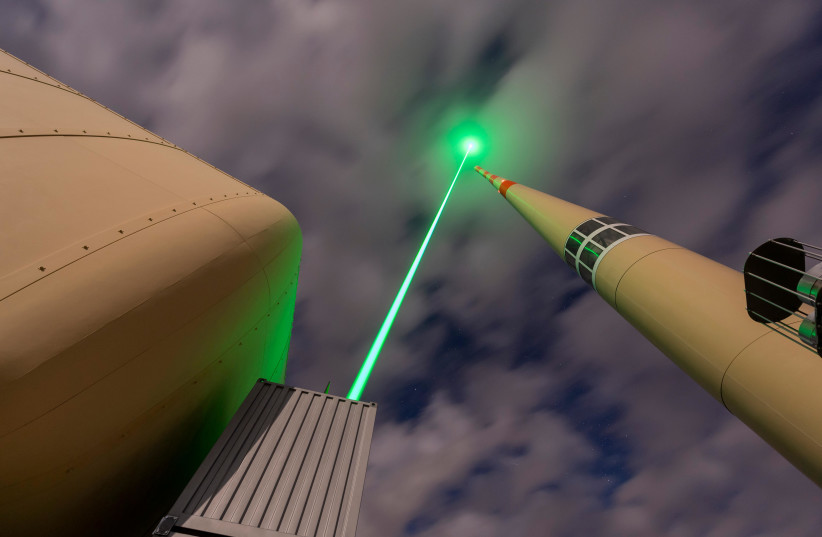A powerful laser that is pointed toward the sky can redirect lightning bolts away from infrastructure, such as airports and power stations, according to new research.
The findings were published on Monday in a peer-reviewed study in the journal Nature Photonics.
The laser could provide an alternative to the Franklin rod, a metal pole that intercepts lightning and redirects it toward the ground.
The idea of using powerful lasers to redirect lightning discharges has been studied previously, but no results have successfully demonstrated the concept.
"A first attempt to trigger and guide natural lightning with lasers was made by Uchida et al. in 1999 using a combination of three lasers with kilojoule energy to form a 2-m-long plasma spark," the study read.
A team of researchers led by Aurélien Houard tested a laser on the Säntis Mountain in Switzerland in 2021 to see if they could successfully use it to intercept lightning strikes.
The laser was the size of a large car and fired up to one thousand pulses per second. The team installed it near a telecommunications tower that is struck by lightning some 100 times annually.

Results of the experiment
After testing the laser between July 21 and September 30, 2021, the researchers found that the laser successfully redirected 4 lightning strikes over a 6-hour period, during which there were at least 16 lightning flashes. They confirmed these findings by using electromagnetic waves emitted by the lightning, as well as increased detection of X-ray bursts, to find the location of the strikes.
“This work paves the way for new atmospheric applications of ultrashort lasers and represents an important step forward in the development of a laser based lightning protection for airports, launchpads or large infrastructures.”
Study
One of the lightning strikes was captured by high-speed cameras that showed that it followed the position of the laser for more than 50 meters.
"This work paves the way for new atmospheric applications of ultrashort lasers and represents an important step forward in the development of a laser based lightning protection for airports, launchpads or large infrastructures," said the researchers.
